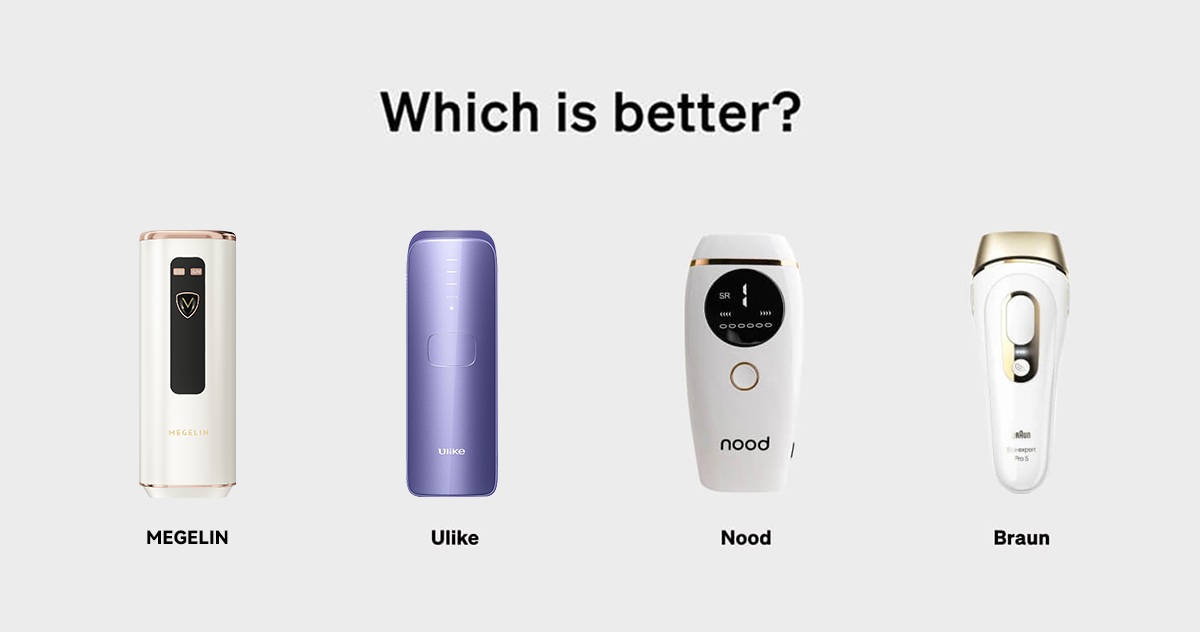
Red Light Therapy for Migraines: Best Practices for Relief
2MegelinMigraines are not just headaches; they are complex neurological events that can severely affect the quality of life of those who suffer from them. With symptoms like intense pain, light sensitivity, and nausea, finding effective relief is a priority for many. Red light therapy for migraines represents a promising non-invasive treatment that has caught the attention of researchers and sufferers alike. By targeting cellular metabolism and aiming for inflammation reduction, this therapy offers a new horizon in migraine management, potentially offering relief where traditional methods fall short.
This article will delve into understanding migraines and their triggers, highlighting the significant role that factors like migraine photophobia and migraine frequency play in the lives of sufferers. It will then explore the benefits of red light therapy for migraines, including how it can aid in migraine prevention, potentially reduce migraine duration, and address the question of what color light helps with headaches. Following this, the article will provide practical advice on how to use red light therapy for headaches effectively, ensuring readers are well-equipped to consider this treatment option. Through this journey, the article aims to offer comprehensive insights into the effectiveness of red light therapy for migraines, answering key questions such as does red light therapy help migraines, can red light therapy cause migraines, and how it impacts pain intensity and light sensitivity, thus providing a roadmap for those seeking relief from this debilitating condition.
Understanding Migraines and Their Triggers
Migraines are not merely headaches; they are complex neurological conditions characterized by symptoms such as severe throbbing pain, nausea, and sensitivity to light and sound. The exact causes of migraines are multifaceted, involving genetic, environmental, and neurological factors. The activation of the trigeminovascular system is a primary pathogenic mechanism, where the release of neuropeptides like CGRP and PACAP leads to inflammation and pain [1].
What Causes Migraines?
Migraines may begin in the brain in areas such as the hypothalamus, which also regulates sleep and circadian rhythms. Disruptions in these areas can trigger migraine episodes. Additionally, imbalances in brain chemicals, notably serotonin, play a significant role in the regulation of pain in the nervous system, affecting migraine susceptibility [1] [2]. Chronic conditions such as inflammation and metabolic syndrome disorders also increase the likelihood of migraines [2].
Common Triggers
Identifying and understanding individual triggers is crucial for managing migraines. Common triggers include:
- Dietary Factors: Certain foods and additives like aged cheeses, processed meats, and substances such as MSG and aspartame are known to provoke migraines [3].
- Hormonal Changes: Fluctuations in estrogen, particularly during menstruation, pregnancy, and menopause, are significant triggers for many women [2].
- Sensory Stimuli: Bright lights, loud sounds, and strong odors can initiate migraine attacks, often related to heightened sensory sensitivity during the premonitory phase of a migraine [3].
- Physical and Emotional Stress: Both physical overexertion and emotional stress can precipitate migraines. Interestingly, relaxation after stress (known as "let-down migraines") often triggers symptoms as well [3].
- Sleep Patterns: Changes in sleep patterns, whether it's too much or too little sleep, can trigger migraines. This is linked to the role of the hypothalamus and its control over sleep and wakefulness [1] [2].
- Weather and Environmental Changes: Shifts in barometric pressure, temperature, and even seasonal changes can lead to migraines [4].
Understanding these triggers and how they interact with individual physiological conditions helps in managing and potentially reducing the frequency and severity of migraine attacks.
Benefits of Red Light Therapy for Migraines
Pain Relief
Red light therapy, also known as photobiomodulation (PBM), has demonstrated significant efficacy in reducing pain associated with chronic migraines. Clinical studies, including a 2018 comparison with botulinum toxin A, have shown that red light therapy can effectively reduce pain days, pain intensity, and the intake of acute medication [5]. Additionally, a 2016 study highlighted that a single treatment could modulate serotonin levels and significantly decrease pain in women with tension-type headaches [5].
Reducing Inflammation
The anti-inflammatory effects of red light therapy are well-documented. It helps in reducing the production of pro-inflammatory molecules and enhances the activity of anti-inflammatory enzymes, thus alleviating inflammation in the brain and other affected areas [6]. Notably, a 2018 trial found that patients recovering from surgery experienced a substantial reduction in inflammation when treated with natural light therapy [7]. Further, PBM has been shown to reduce inflammation markers in various conditions including joint disorders, lung disorders, and traumatic injuries [8].
Improving Sleep
Red light therapy has also been found to improve sleep disturbances, which are commonly associated with migraine sufferers. Research indicates that this therapy not only decreases headache frequency but also enhances overall sleep quality [9]. A 2014 study noted significant improvements in sleep patterns and reductions in sleep-related disorders among migraine patients following red light therapy treatment [9]. This suggests a dual benefit of alleviating migraine symptoms and concurrently addressing sleep issues, which are often a comorbid condition in migraine sufferers.
How to Implement Red Light Therapy
Choosing the Right Device
When selecting a red light therapy (RLT) device, it's crucial to consider the specific wavelengths and the type of light it emits. Devices typically range from 600 to 900 nanometers, with specific wavelengths like 660 nm for skin treatments and 850 nm for deeper tissue healing [10]. The choice between red light and near-infrared light depends on the treatment needs; red light is beneficial for surface skin issues, while near-infrared penetrates deeper to aid muscle and joint recovery [11]. For those needing both surface and deeper tissue treatment, a combination unit is advisable. Additionally, the number of LEDs in a device affects its effectiveness—the more LEDs, the more comprehensive the coverage and the shorter the treatment time [11].
Dosage and Frequency
Effective implementation of red light therapy requires adherence to proper dosage and frequency guidelines. General recommendations suggest starting with sessions ranging from a few minutes up to 20 minutes, two to three times per week [5]. Users should begin with lower frequencies and gradually increase them based on their response. If positive results are observed, it is safe to increase the frequency to daily sessions if necessary [5]. It is also important to maintain the correct distance from the device, typically 6 to 8 inches, to optimize light exposure without risking overexposure [11]. Adjustments can be made to find the most effective duration and frequency, as individual responses can vary.
Conclusion
Through the exploration of red light therapy's potential to address migraines, we've uncovered its multifaceted benefits, from reducing pain and inflammation to improving sleep quality for those plagued by this debilitating condition. By synthesizing insights into the mechanisms behind migraines, the causes and triggers contributing to their occurrence, and the promising outcomes of red light therapy, this article has aimed to chart a course towards effective migraine management. It highlights not only the therapeutic potential of red light therapy in mitigating migraine symptoms but also its role in enhancing overall quality of life by addressing associated sleep disturbances.
As we conclude, the significance of understanding migraines in their full complexity becomes clear, emphasizing the importance of informed, individualized approaches to treatment. While red light therapy emerges as a compelling option for those seeking relief, it also underscores the necessity for ongoing research and personalized care strategies. By integrating these insights with practical guidance on red light therapy application, we encourage migraine sufferers to explore this treatment modality as a part of their broader management plan, always considering consultation with healthcare professionals to tailor approaches to their unique health profiles.
FAQs
1. Can red light therapy alleviate migraine symptoms?
Red light therapy has been shown to be an effective, natural method for reducing both the frequency and severity of migraines. Studies, including one where participants experienced fewer and less severe migraines after undergoing red light therapy, support its benefits.
2. Which color light is most effective for migraine relief?
Research indicates that green light is particularly beneficial for those suffering from chronic pain and migraines. Exposure to green light has been found to lessen the severity and frequency of migraine episodes.
3. What is the most effective treatment for migraines?
Triptans are considered highly effective for migraine relief, outperforming ibuprofen significantly. Eletriptan, for instance, provides relief in 78% of cases, while other triptans like zolmitriptan (Zomig) and sumatriptan (Imitrex) are effective 74% and 72% of the time, respectively.
4. Is infrared therapy beneficial for migraine sufferers?
Using an infrared sauna can be a valuable part of a migraine treatment plan. Regular sessions may improve pain management and potentially reduce or eliminate the need for medication. Additionally, it promotes a healthier lifestyle, which can help combat various headache types linked to stress, high blood pressure, and other conditions.
References
[1] - https://www.ncbi.nlm.nih.gov/pmc/articles/PMC9892937/
[2] - https://platinumtherapylights.com/blogs/news/red-light-therapy-for-migraines
[3] - https://migrainetrust.org/live-with-migraine/self-management/common-triggers/
[4] - https://magazine.medlineplus.gov/article/10-common-migraine-triggers-and-how-to-cope-with-them
[5] - https://rouge.care/blogs/rouge-red-light-therapy-blog/red-light-therapy-for-headaches-and-migraines-relief-for-relentless-pain
[6] - https://activecarechiro.co.uk/2023/11/migraine-treatment/
[7] - https://www.degreewellness.com/2019/10/treating-inflammation-and-pain-with-red-and-near-infrared-light-therapy/
[8] - https://www.ncbi.nlm.nih.gov/pmc/articles/PMC5523874/
[9] - https://www.lighttreeventures.com/post/the-sleeping-beauty-secret-the-red-light-therapy
[10] - https://www.health.com/best-red-light-therapy-devices-7759543
[11] - https://www.rehabmart.com/post/how-to-choose-a-red-light-therapy-device









